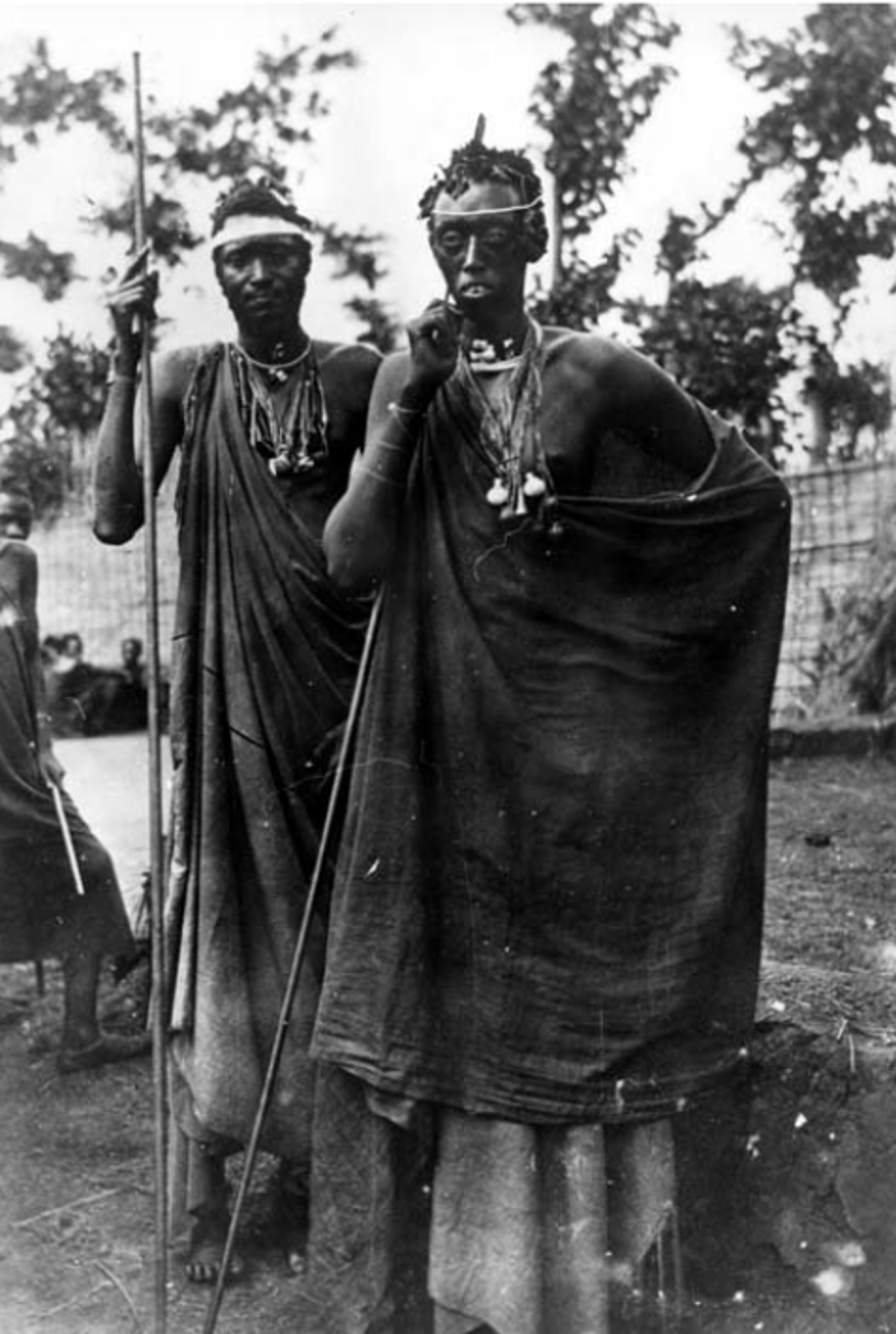 |
| Some Balera women with their children Germans met on their way through Africa |
The expedition of
Adolf
Friedrich Herzog of Mecklenburg
was one of the most ambitious scientific
undertakings of Germans during their colonial rule. Between
1907 and 1908, the expedition went through
most of interlacustrine Africa. Some dozen Germans from various
disciplines – geography, botany,
zoologyy, ethnography, there was even a photographer on board –
took part in the expedition.
The results of the expedition were published in several marvelous
volumes with
hundreds of illustrations, maps and photographs. 5000
photographs alone were
made in the eleven months the expedition was roaming through Africa,
some hundred were published and begun their
way through different publications by the members of the expedition.
Many were taken by Max Weiß, who was the photographer of the
expedition.
 |
| A group of Balera men |
Parsing
through the pictures of the volume on the ethnography,
I was always struck with one
particular feature. Many pictures were seemingly taken along the road
while the expedition was traveling. So I imagine that when
local people saw or heart rumors of the
expedition, and because of curiosity, they went to the road to meet
these funny Germans with their instruments and thousands of porters.
Germans, with
their own desire for curiosity,
were interested in documenting these
accidental meetings.
Performing at the road
 |
| A group of Balera musicians (Rwanda) performing at the road for the expedition |
 |
| Balera dancers |
This
situation produced what I call ethnography on the road, when rather
by chance than by a scheme, Europeans got their knowledge about
Africans and their societies. In these encounters, Germans obviously
asked some people to perform dances and asked for artifacts. In
the short moment in which both sides were
engaged, Germans were eager to find out the
typical, or the most obvious. They
hoped it to find it in visual markers like coiffures, clothes and
shields.
 |
| "Weapons of Balera" |
The
obvious was the surface. The remarkable thing about all this is that,
after returning home, the members of the expedition took these
surfaces presented to them by Africans in the short moment of an
encounter at the road and frozen in photographs as a basis for far-raging theories of all
sorts. About historical origins of the people they met, about the
political structures, and so on.







Comments
Post a Comment